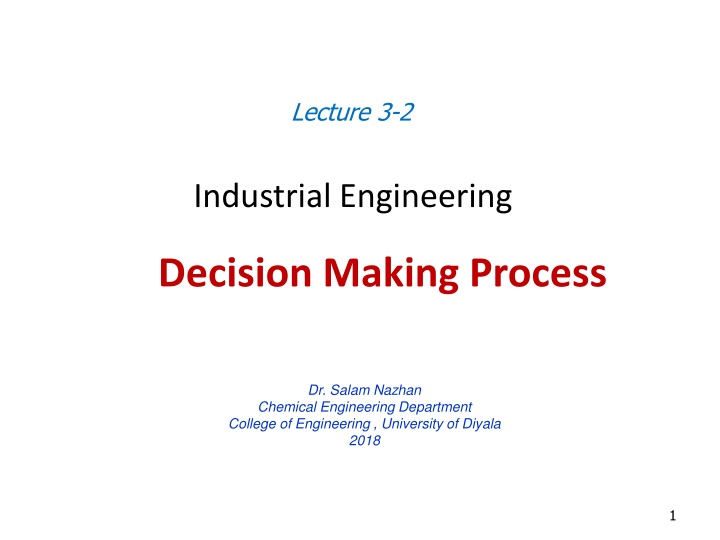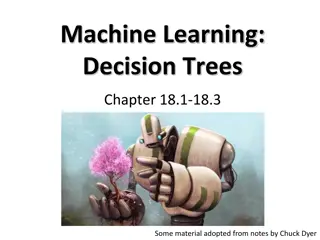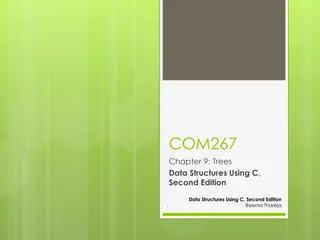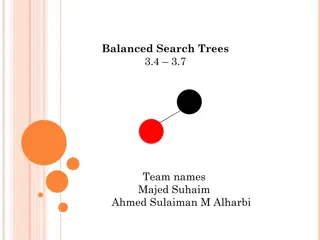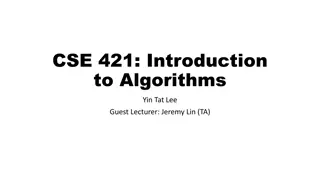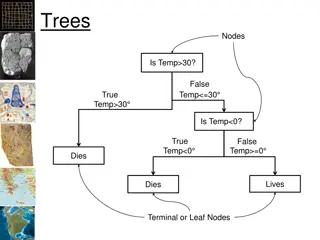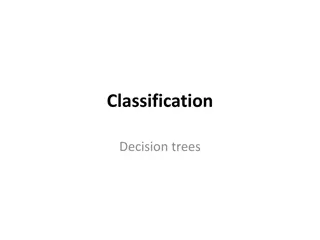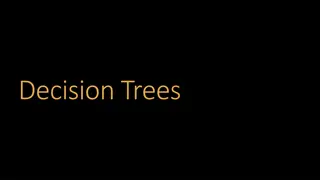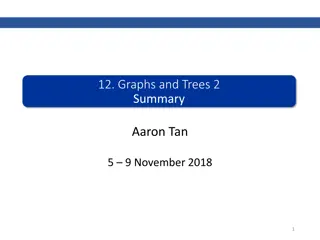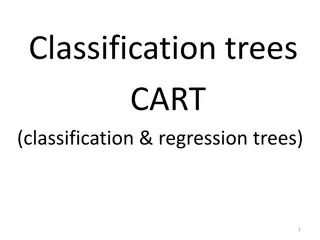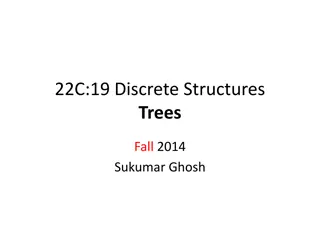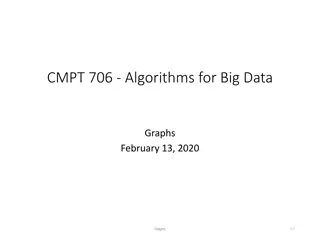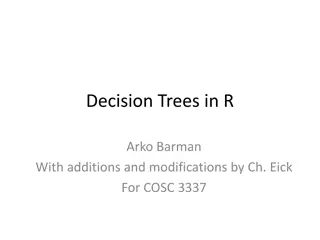Decision Trees in Industrial Engineering
Decision trees are a valuable tool in industrial engineering decision-making processes. They allow for complex choices involving uncertainties, costs, and outcomes to be visually represented and analyzed. This primer covers the definition, applications, advantages, and disadvantages of decision trees in various fields such as project management and data mining.
Download Presentation

Please find below an Image/Link to download the presentation.
The content on the website is provided AS IS for your information and personal use only. It may not be sold, licensed, or shared on other websites without obtaining consent from the author.If you encounter any issues during the download, it is possible that the publisher has removed the file from their server.
You are allowed to download the files provided on this website for personal or commercial use, subject to the condition that they are used lawfully. All files are the property of their respective owners.
The content on the website is provided AS IS for your information and personal use only. It may not be sold, licensed, or shared on other websites without obtaining consent from the author.
E N D
Presentation Transcript
Lecture 3-2 Industrial Engineering Decision Making Process Dr. Salam Nazhan Chemical Engineering Department College of Engineering , University of Diyala 2018 1
Decision tree What is a Decision Tree? A decision tree is a very specific type of probability tree that enables you to make a decision about some kind of process. For example, you might want to choose between manufacturing item A or item B, or investing in choice 1, choice 2, or choice 3. Trees are an excellent way to deal with these types of complex decisions, which always involve many different factors and usually involve some degree of uncertainty. Although they can be drawn by hand, software is often used as the trees can become complex very quickly. Decision trees sketch the decisions points in the form of a tree and also the events and the probabilities involved in various courses that might be undertaken. The decision tree approach makes it possible to see at least the major alternatives and the fact that subsequent decision may depend upon the events in the future. 2
Application of Decision Trees A decision tree is a method you can use to help make good choices, especially decisions that involve high costs and risks. Decision trees use a graphic approach to compare competing alternatives and assign values to those alternatives by combining uncertainties, costs, and payoffs into specific numerical values. If you are a project manager, business analyst, or a project decision- maker, this primer is for you. If you are interested in cognitive science, artificial intelligence, data mining, medical diagnosis, formal problem solving, or game theory, this primer provides an introduction to basic concepts of decision tree analysis. 3
Advantages Decision trees offer advantages over other methods of analyzing alternatives. They are: Graphic. You can represent decision alternatives, possible outcomes, and chance events schematically. The visual approach is particularly helpful in comprehending sequential decisions and outcome dependencies. Efficient. You can quickly express complex alternatives clearly. You can easily modify a decision tree as new information becomes available. Set up a decision tree to compare how changing input values affect various decision alternatives. Standard decision tree notation is easy to adopt. Revealing. You can compare competing alternatives even without complete information in terms of risk and probable value. The Expected Value (EV) term combines relative investment costs, anticipated payoffs, and uncertainties into a single numerical value. The EV reveals the overall merits of competing alternatives. Complementary. You can use decision trees in conjunction with other project management tools. For example, the decision tree method can help evaluate project 4
Disadvantages 1-If a decision tree is used for categorical variables with multiple levels, those variables with more levels will have more information gain. 2-Calculations can quickly become very complex, although this is usually only a problem if the tree is being created by hand. 5
Example; A property owner is faced with a choice of: (a)A large-scale investment (A) to improve her flats. This could produce a substantial pay-off in terms of increased revenue net of costs but will require an investment of 1,400,000. After extensive market research it is considered that there is a 40% chance that a pay-off of 2,500,000 will be obtained, but there is a 60% chance that it will be only 800,000. (b)A smaller scale project (B) to re-decorate her premises. At 500,000 this is less costly but will produce a lower pay-off. Research data suggests a 30% chance of a gain of 1,000,000 but a 70% chance of it being only 500,000. (c) Continuing the present operation without change (C). It will cost nothing, but neither will it produce any pay-off. Clients will be unhappy and it will become harder and harder to rent the flats out when they become free. How will a decision tree help the taking of the decision? 6
Process: Draw the decision tree representing the options open to the property owner. The tree starts with a decision point, a node, so start the tree with a square. Three lines radiate from this, representing the three options. Label them carefully. 7
Process: Add the chance nodes, the probabilities and the outcomes. he options end with possible outcomes, so mark with a circle. In this case there are two possible outcomes for the investment options, and only one for the 'as is' option. Add all the data to this diagram. 8
Process: Calculate the expected values. Now start to calculate, Multiply the outcomes by the relevant probability, and then add the answers together for each option. Put answer above the appropriate circle. 9
Process: The final stage is to adjust for the costs of the options. Now subtract the costs of each option from the expected value, and mark the calculation on the diagram. Reject the options with the lowest net expected value. The final tree diagram is shown below 10
References Introduction to Industrial Engineering, by Z. Max Shen Industrial Engineering, by N. J. Manck Industrial Management, by Shiv Jhalani Reference Books: 1. Management by Knootz. 2. Management by Griffin. 3. Management theory and Practices by JS Chandan.
